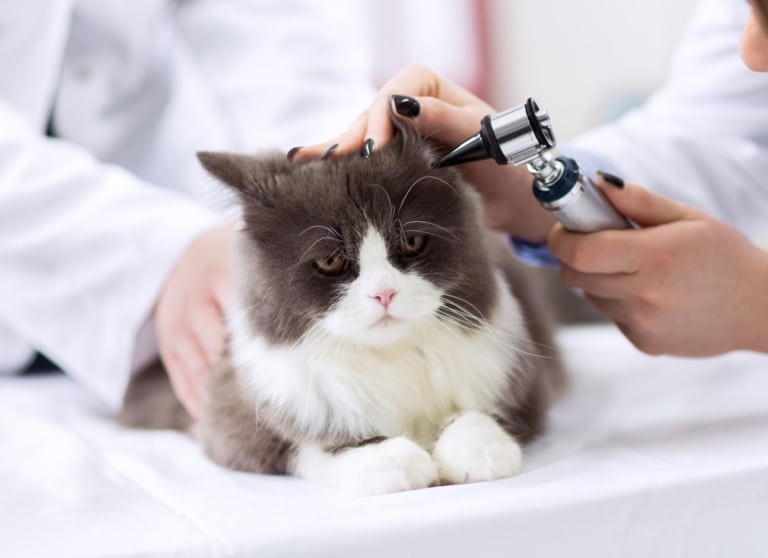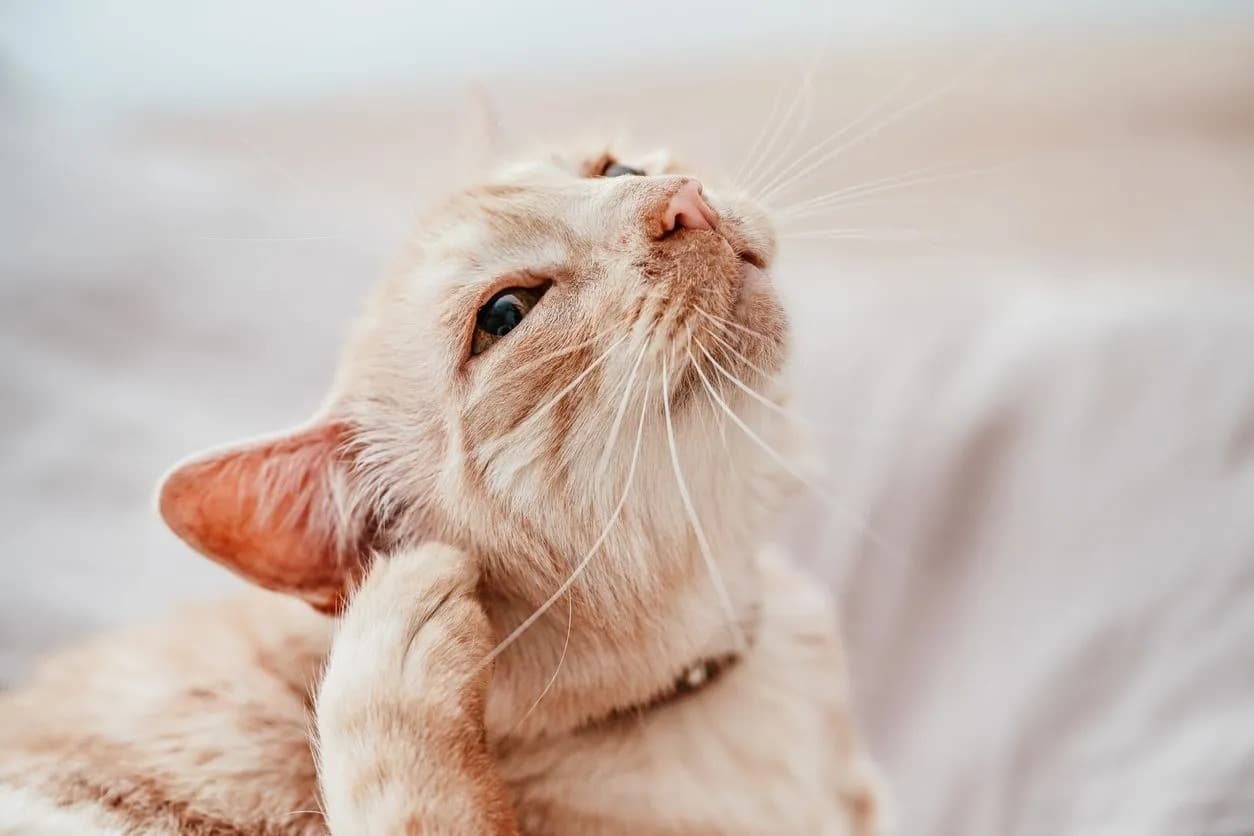Symptoms of otodectosis
Otodectosis, or ear mites, is a common disease in cats caused by small parasites called Otodectes cynotis. They live in the ear canals, feed on epithelial cells and cause severe irritation. The first signals are constant itching: the cat actively scratches, shakes his head, can scratch his ears to blood. Inside the ear canal accumulates dark, almost black plaque, similar to coffee grounds. The ears often have an unpleasant odor. At later stages, the animal becomes irritable, lethargic, may refuse to eat because of pain. If the disease is not treated, complications arise – otitis media, inflammation of the middle ear and even hearing loss.

Treatment and prevention of ear scabies
Treatment of otodectosis always begins with a thorough cleaning of the ear canal. For this purpose, special lotions or solutions for cats are used, which soften the crusts and remove secretions. After cleaning, antiparasitic drugs are used, which destroy the mite. It is important to treat not only one ear, but both – even if only one ear looks affected, parasites quickly pass.
Prevention consists in regular inspection of the ears, especially after contacts with yard or stray cats. It is necessary to maintain the immunity of the animal, deworming in time and use drops or preparations for the prevention of mites. Cleanliness and attentiveness of the owner significantly reduce the risk of infection.
Preparations for the treatment and prevention of ear mites in cats
In veterinary practice, several groups of remedies are used:
Drops in the ears: “Otynum”, “Otibevin”, “Surolan”, “Aurican” – combine antiparasitic, anti-inflammatory and antifungal action.
Systemic drops on the withers: “Stronghold”, “Advocate”, “Revolution” – act not only against ear mites, but also against fleas and some worms.
Cleansing lotions: “Otovin”, “Bars-lotion”, special ear liquids for cats.
Additional means: in case of severe inflammation, the veterinarian can prescribe an antibiotic or corticosteroids as part of combined preparations.
The prescription and dosage should be determined by the veterinarian depending on the weight of the animal, the state of its health and the extent of the lesion. Self-medication can be dangerous, because the incorrect use of drugs will only complicate the course of the disease.
Conclusion
Otodectosis in cats is a common but treatable disease. Timely recognition of symptoms, regular ear examinations, proper treatment and prevention will help to preserve the health and hearing of your pet.











